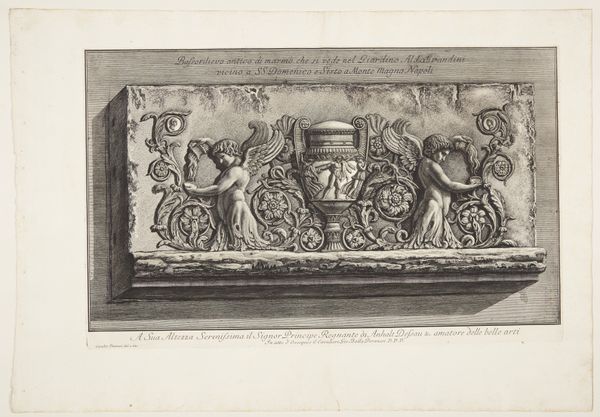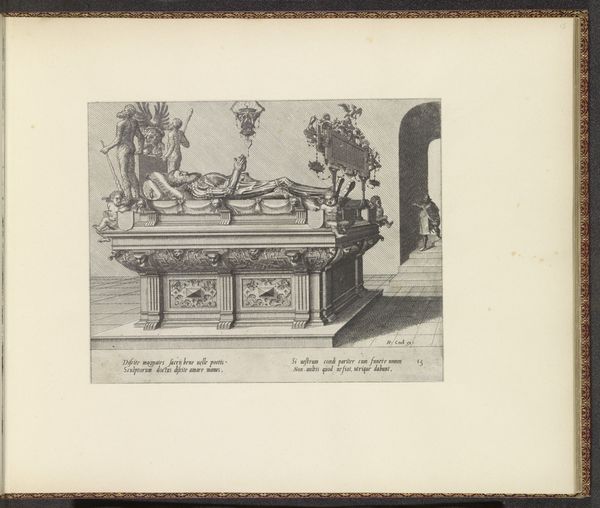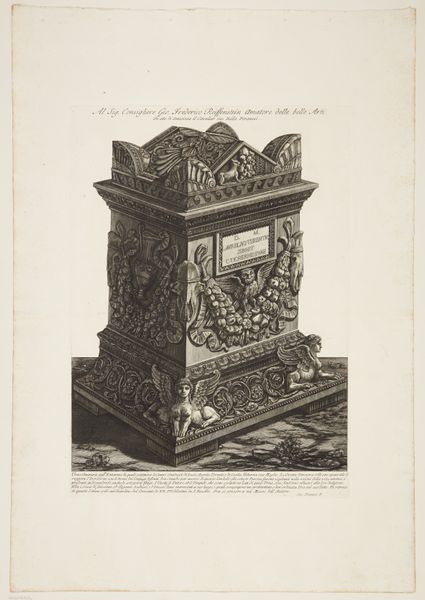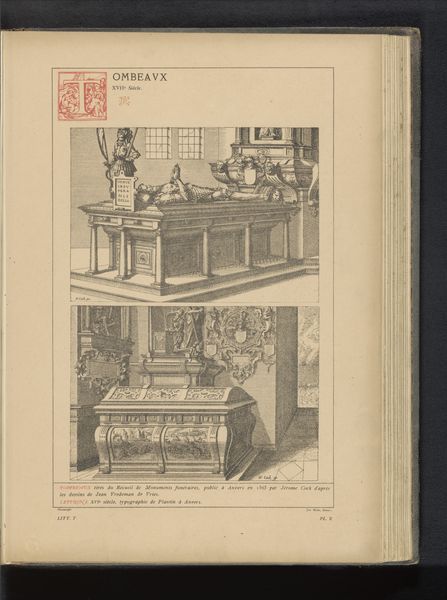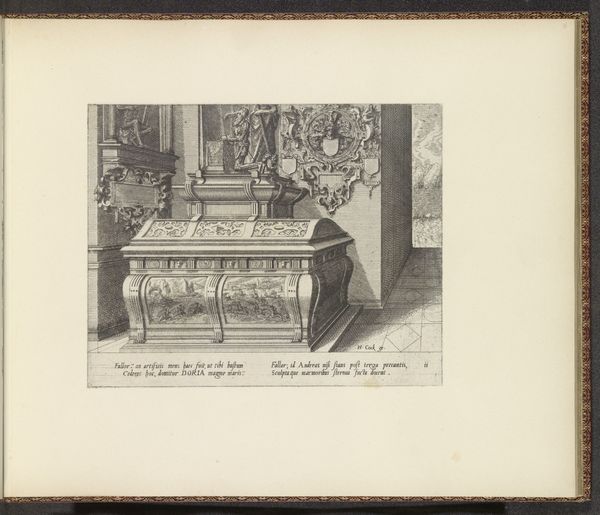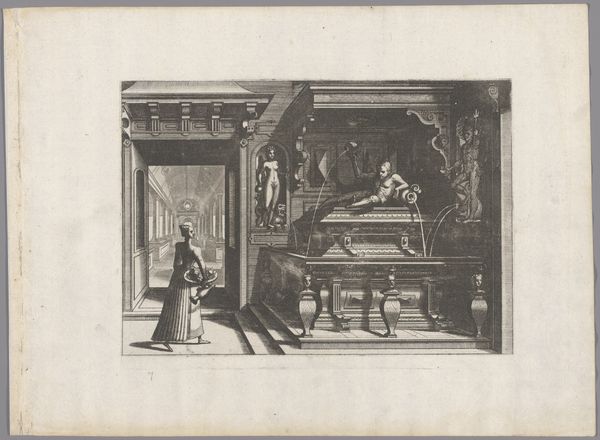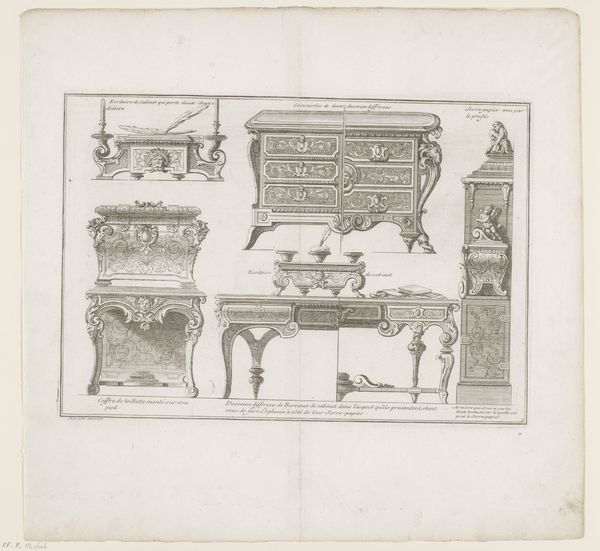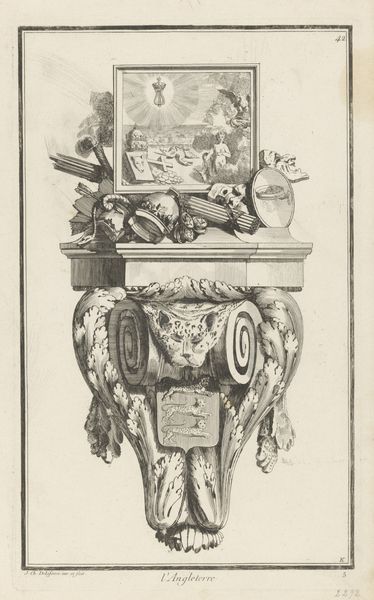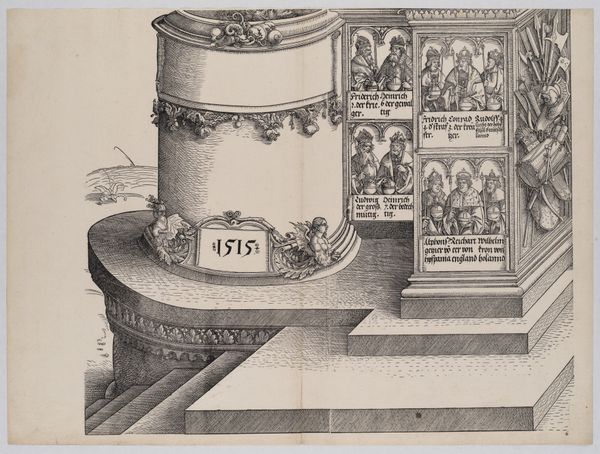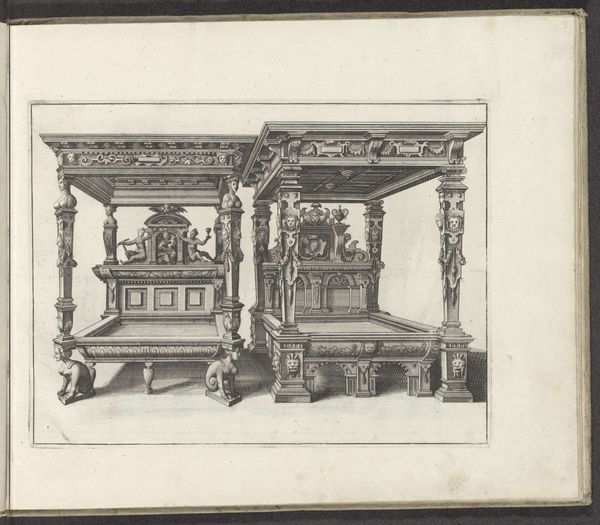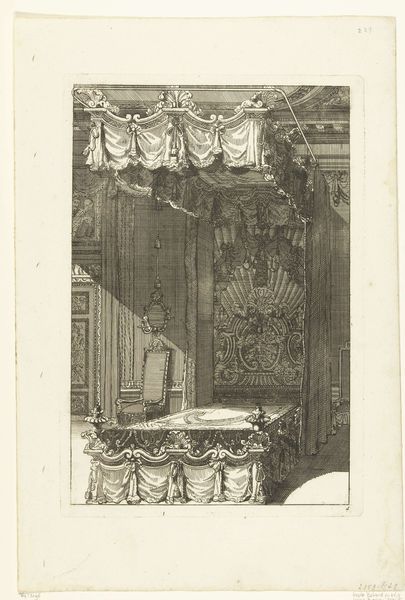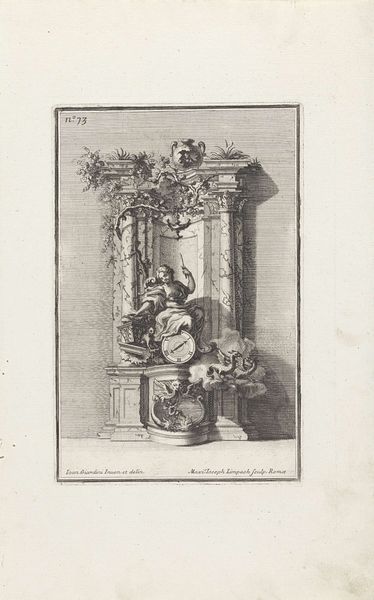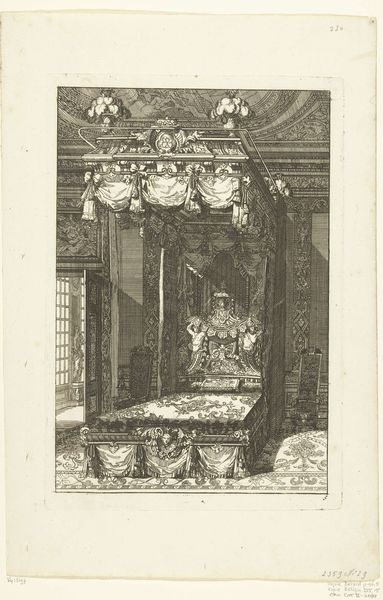
Dimensions: 380 mm (height) x 667 mm (width) (plademaal)
Curator: Right, let’s dive in. We are looking at an etching, “Cinerary urns and lamps,” created by Giovanni Battista Piranesi sometime between 1769 and 1778. The artwork, held at the SMK, features urns and lamps rendered in elaborate detail using engraving and etching. Editor: My first impression is one of grandeur mixed with… well, morbidity. These aren’t just decorative objects; they’re associated with death and remembrance. But Piranesi presents them with such ornate detail, it’s like celebrating the very act of mourning. Does that resonate with you? Curator: Absolutely. Piranesi, known for his dramatic architectural fantasies, brought that same sensibility to these objects. Think of Rome, of Baroque aesthetics and elaborate traditions— suddenly funerary items became monumental. Considering this was part of a series, we must understand that his engravings sought to recapture a past steeped in a melancholic beauty. Editor: Right. Thinking of Rome, especially with his expertise in architecture and set design, Piranesi’s work operates as more than documentation. This print idealizes Roman grandeur, and positions it at this very peculiar crossroads of remembering past powers, steeped in a sense of unavoidable, undeniable decadence. How might this aesthetic fascination speak to contemporary debates? Curator: He seems fascinated by not only grandeur, but by the *fragment* of that grandeur, too. Everything he depicted in the *Vedute*, as well as here in "Cinerary Urns," exists almost as memory, idealized but visibly, tangibly incomplete. You can see, too, how baroque style plays into it, creating an emotional resonance that exceeds documentary precision. The deep blacks that are a consequence of using etching/engraving techniques further the sombre and dark subject of the scene. Editor: Exactly, because isn't the creation of memory making as well? To render it artistically is to reconstruct. These pieces feel less about tangible objects and more like statements on transience, memory, power, and representation itself. There's an irony to freezing these artifacts in print, ensuring their longevity even as they represent mortality. Curator: True. A poignant dance with time and mortality—and it invites us to contemplate our own place in that intricate history, even centuries later. Editor: And how we constantly repurpose and re-contextualize history to create present narratives, that's also extremely palpable and… well, makes you reflect on that past/future binary that’s always felt very suspicious, to say the least!
Comments
No comments
Be the first to comment and join the conversation on the ultimate creative platform.
